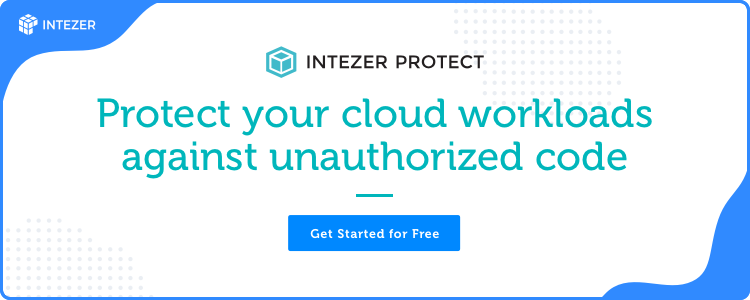Kubernetes is one of the top open-source container orchestration projects, as it dramatically simplifies the creation and management of applications by providing built-in solutions to common problems. Although Kubernetes can be a solution for companies working with a large number of containers, others might be better off using an alternative solution.
Advantages of Using Kubernetes
There are several advantages that come with Kubernetes:
- Automatic scheduling of containers: Kubernetes takes care of the heavy lifting and automatically schedules/reschedules containers from one node to another to increase resource utilization.
- Service discovery: Containers can easily communicate via Kubernetes’ process of service discovery, which comes with two options to connect to a service: via an environment variable or Kube DNS (a cluster add-on).
- Load balancing: When dealing with multiple services, you need a load balancer to spread the traffic. Kubernetes lets you set one up with just a few lines of configuration code.
- Self-healing: Kubernetes automatically monitors containers and reschedules them if they crash or terminate.
- Horizontal scaling: Kubernetes can manually or automatically scale your containers up or down based on demand.
- Rolling upgrades with zero downtime: Kubernetes allows for containers to be updated, or reverted, without disrupting service.
- Secret data management: Kubernetes stores and manages sensitive information, including passwords and API keys.
Disadvantages of Using Kubernetes
And then, there are the downsides:
- Steep learning curve: Kubernetes doesn’t come up with an easy-to-use GUI, which can make it challenging to learn.
- Overkill for small applications: If your applications are too small, such as a landing page with a store’s location and hours, Kubernetes can be overkill, as it brings unneeded technical complexity.
- Installation isn’t simple: Kubernetes comes with many components (API server, controller manager, etcd, kubelet, etc.), making installation not so straightforward, unlike with a managed solution.
- Best for microservices: If you’re not using a microservices environment, Kubernetes is really of no use.
When Can I Skip Kubernetes?
Before adopting Kubernetes, you should make sure your organizational requirement or use case demands it as a solution. Let’s take a look at some of the scenarios where you can skip Kubernetes:
- You want to avoid complexity.
- You are a small organization running only a few containers.
- You don’t have the time and resources needed to educate your team and address deploying a new technology (as Kubernetes is still relatively new).
Alternative Solutions
What other options do you have? Below we offer some alternative solutions and service comparisons to help you decide which choice would best fit your organizational needs. First up, Docker Swarm.
Swarm vs. Kubernetes
Let’s look at a side-by-side comparison between Docker Swarm and Kubernetes:
Docker Swarm |
Kubernetes |
Small developer community |
Large developer community |
Suitable for small architectures |
Suitable for complex architectures |
Useful when dealing with a small set of containers, 10-20 |
Useful when dealing with a large set of containers, 1000+ |
There are several factors to consider when choosing Swarm over Kubernetes as your container orchestration tool.
Installation
Kubernetes: Setting up a Kubernetes cluster is challenging and complicated, as it involves a lot of components, plus, you need your worker node to join the cluster.
Docker Swarm: Setting up a cluster is pretty simple and only requires two commands: One to bring up the cluster and the other to join the cluster to your nodeScalability.
Kubernetes: Kubernetes’ distributed system guarantees your cluster state, but this in turn slows down scaling.
Docker Swarm: Scaling up is 5x faster than Kubernetes.
Load Balancing
Kubernetes: If your service spans multiple containers running in different pods, you’ll need to manually configure load balancing since Kubernetes has multiple nodes, multiple pods inside each node, and multiple containers inside each pod.
Docker Swarm: Swarm takes care of automatic load balancing; it does not use pods and containers are easily discovered.
In summary, Docker Swarm offers a simple solution to get started quickly, while with Kubernetes, you need to deal with a complex ecosystem. Swarm is popular among the developer community, which seeks simplicity and faster deployment.

OpenShift
Up next is OpenShift. Let’s take a look at what this alternative solution brings to the table by reviewing some of the drawbacks of Kubernetes and how OpenShift solves those issues:
Kubernetes |
OpenShift |
Deploying an application is time-consuming. |
Deploying an application is pretty simple, involving only creating a project (equivalent to a namespace) and application. |
You need to figure out your CI/CD system. |
OpenShift does the heavy lifting and creates a CI/CD pipeline for your application. |
You need to add a dashboard to manage your cluster health. |
It comes with a dashboard that easily builds on top of the Kubernetes API. |
Adding a node to the cluster is time-consuming. |
OpenShift uses a pre-configured Ansible playbook, making it easier to add new nodes. |
OpenShift’s edge over Kubernetes is its unique features, especially its ability to streamline most individual tasks using the CI/CD system.
Serverless Solution (AWS Lambda)
AWS Lambda offers up a serverless container orchestration solution, allowing you to run code without dealing with the servers themselves.
AWS Lambda |
Kubernetes |
No server to provision or manage |
Must manage your own infrastructure |
Never pay for idle resources |
Must pay as long as your infrastructure is up |
No server to patch |
Have to patch your own servers |
Highly available |
On you to make it highly available |
Limited selection of compute power (128MB to 3GB) |
No such limitation, depends on your provisioned infrastructure |
Time limit for code execution |
No such limitation |
Use Cases of Serverless (AWS Lambda) vs. Kubernetes
AWS Lambda is an event-driven architecture, where an event such as an AWS service invokes a Lambda function to process that event. For example, if a user uploads any file/photo to your S3 bucket, that is an event that will trigger your Lambda function.
Lambda is also useful when your traffic is unpredictable, as Lambda automatically takes care of autoscaling and follows the pay-as-you-go model. Kubernetes is better suited for applications where traffic is predictable, as you pay for the underlying infrastructure.
In summary, Lambda’s pros are that it is easier to onboard and focuses on solving a business problem. Meanwhile, Kubernetes (installed on-premises) gives you complete control of your environment and a rich ecosystem but has a steep learning curve and operational overhead. Which orchestration solution you choose depends completely on your requirements and whether or not your traffic is predictable.
Fargate
Fargate is AWS’ managed serverless compute engine that lets you run containers without the need to provision and configure the cluster.
Comparison of AWS EKS vs. AWS Fargate
EKS |
Fargate |
Managed Kubernetes solution by AWS |
Container on-demand solution |
Requires you to create your cluster |
No need to create any cluster or determine EC2 instance size |
Control plane costs $144 |
Only pay for tasks based on memory and CPU |
Suitable for cloud-native container architectures and easier for moving your on-premises Kubernetes to EKS |
Suitable for workloads that run for a certain duration |
So, if you need to run a container and don’t want to worry about patching, provisioning, and managing servers, then Fargate is your ideal solution; it also scales on demand. The only thing to note is the number of tasks you’re running since Fargate is an expensive solution if you have high-CPU/memory tasks running all the time.
Google Kubernetes Engine (GKE)
Google Kubernetes Engine (GKE) is Google’s managed service for running Kubernetes.
Some of the advantages of using GKE over the vanilla Kubernetes solution are that GKE:
- Automatically takes care of cluster creation and joining of the worker nodes
- Takes care of managing the Kubernetes master and provides a high availability environment
- Handles all container networking details for you
- Provides you hardened OS images built for containers
- Takes care of autoscaling
- Automatically upgrades your GKE cluster when a new version of Kubernetes is released
- Features auto-repair, so if a node fails a health check, the Kubernetes engine will try to get that node back online
- Comes with a logging and monitoring solution
GKE vs. AWS EKS
Now, time to review some key differences between GKE and EKS:
Google Kubernetes Engine (GKE) |
Elastic Kubernetes Service (EKS) |
Automatic upgrade of control plane (users can also initiate) |
Manual control plane upgrade (e.g., for AWS VPC CNI, kube-proxy) |
Automatic upgrade of worker nodes |
Worker node upgrades initiated by users |
Uses container-optimized OS (default), Ubuntu |
Uses Amazon Linux 2 (default), Ubuntu (partner AMI) |
Container runtime supports Docker by default, also supports containerd and gVisor. |
Only supports Docker |
Control plane supports two cluster options, zonal clusters (single control plane) or regional clusters (three Kubernetes control planes) |
Control plane deployed across multiple availability zones |
Node repair enabled by default |
Node repair is not Kubernetes-aware, but AWS autoscaling group will kick off and replace the failed node |
As you see in the above chart, GKE has a slight edge over EKS, as it automatically takes care of the control plane and worker node upgrades, while this is a manual process in EKS.
Summary
There is no doubt that Kubernetes comes with a lot of powerful capabilities and features. Still, the question you need to ask before adopting Kubernetes in your organization is: Does it solve your business problem? You also need to keep in mind the steep learning curve and cost associated with pursuing this new technology.
Managed solutions provided by cloud vendors like Google (GKE) and AWS (EKS) will make your life easier, but the trade-off is vendor lock-in. If your application is not complicated, you can use a solution like Docker Swarm or serverless.
These are all container orchestration tools at the end of the day, and they are there to simplify your work. You need to choose wisely and consider other options before going with Kubernetes as a solution.
Intezer Protect
Once you pick a container orchestration platform that is right for you, you need to secure it. Containers are not secure by default and have become the target of an expanding number of attacks. Doki is a malware that can break out of containers and take up your host’s resources for cryptomining. There’s also Kaiji, which makes your server part of a botnet used in DDoS attacks. Intezer Protect defends your container workloads in runtime against the latest cloud threats.





